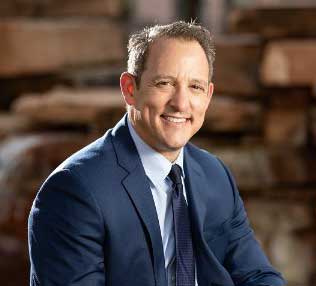Whenever choosing to pursue a procedure, it is absolutely imperative that you select a location and provider you can trust. One of the first steps to making sure your choice is correct is to educate yourself on regenerative procedures with stem cells, growth factors, exosomes, secretomes, and microRNA. It is important to note that not all providers will treat you equally, and not all of them will source their biologics from quality labs.
Can Stem Cell Regenerative Procedures Cure Me?
No one should ever promise you that these procedures can cure or heal your condition. It is inappropriate to guarantee that your condition will just disappear after treatment. Instead, it is much more realistic to consider that these procedures may help improve your condition. Since every person and management path is unique, it is impossible to promise that they will completely resolve your condition, or to guarantee effectiveness.
With that being said, there are some very promising areas where regenerative medicine is being studied. See below for some examples.
- Spinal Cord Injuries
- ARMD and glaucoma
- Heart Disease
- Liver Disease
- Diabetes
- Osteoarthritis
- Muscle degeneration
- Bone degeneration
- Neurodegenerative diseases
- SLE
- Cartilage injuries
- Tendon injuries
- Hodgkin’s lymphoma
- Parkinson’s disease
- Many more conditions
What Kind of Stem Cells Exist?
There are different types of stem cells that you should be aware of, but broadly there are two kinds that you are more likely to encounter. These types are adult stem cells and perinatal stem cells.
Adult stem cells are found in most tissues in adults. Examples include things like bone marrow and fat. In comparison to perinatal stem cells, these stem cells are more limited in what types of cells they can turn into.
Perinatal stem cells are commonly found in amniotic fluid and umbilical cord products. These stem cells have an amazing ability to be changed into specialized cells due to their flexibility.
Are Regenerative Procedures Safe?
Luckily, if you go to a good provider, the risks for amniotic and umbilical tissue are low. There are some standard risks, such as infections from the procedure, bleeding, nerve injury, and allergic reaction.
In a Duke University study done to test the effects of stem cells on children with an autism spectrum disorder, no infusion-related infections or serious infections were reported. The most common adverse effect related to the procedure was mild allergic reactions. The end conclusion was that this particular procedure was safe and well tolerated.
The most important thing you can do to prevent any adverse reaction is to go to a provider that uses only the top labs certified by the FDA to source their regenerative biologics. These approved labs are under strict regulation on how they handle and test the tissue, and undergo extreme precautions to prevent disease transmission or rejection reactions.
How Do The Labs You Source From Handle Their Biologics?
While any provider should be sourcing from an FDA certified lab, that does not mean that all of these labs will provide the same product. No single method for cryopreservation is used at every lab and there are significant variations in the processing methods. Generally, the process is made up of the below components.
- The donor material is acquired from consenting women undergoing a scheduled c-section.
- The material is sterile transported to the FDA certified lab and processed.
- DNA factors are enzymatically removed, rendering the biologic immunologically privileged.
- Buffer and preservative are added during the processing.
- A sample of the biologic is sent out for serology testing, to ensure that no communicable diseases are present.
- The biologic is then cryogenically frozen.
- Once the serology tests come back negative, it can be shipped out for use.
- If any of the tests are positive, the whole donor material is discarded.
This seems like a pretty straight-forward process, but different labs vary in their methods dramatically. For instance, freezing temperature, freezing rate, durability, thawing temperature, thawing rate, and cryopreservative amount are all still debated. This means one lab may go extremely heavy on preservatives or radiation, while another uses much less. Because of this, it is important that your provider is aware of the procedures that their lab uses and that they only accept quality regenerative products.

Dr. David Greene
MD, PhD, MBA
Dr. David Greene, MD, PhD, MBA, is a pioneering leader in regenerative medicine and healthcare marketing. As a residency and fellowship-trained orthopedic surgeon, Dr. Greene transitioned from clinical practice to become the founder and CEO of R3 Stem Cell and US Lead Network, where he has revolutionized patient care and medical practice growth through innovative therapies and digital marketing strategies. He has authored two influential books on healthcare internet marketing, ranks among the top expert authors globally, and has been featured on the cover of Corporate Vision magazine for his impact on global regenerative therapies. Beyond his professional achievements, Dr. Greene is passionate about education, compassion, and continuous innovation.










No Comments